Self-Defense Techniques for Travellers - Staying Safe Abroad
Traveling is one of life's greatest adventures, but it can also come with its fair share of risks. Whether you're wandering through bustling city streets or exploring serene landscapes, the unexpected can happen at any moment. That's why understanding and practicing self-defense techniques is crucial for travelers. Not only does it equip you with the skills to protect yourself, but it also enhances your confidence, allowing you to navigate unfamiliar environments with ease.
In this article, we will delve into various self-defense techniques tailored specifically for travelers. From basic striking methods to utilizing everyday items as weapons, we aim to provide you with practical tools to stay safe abroad. Remember, the goal is not to become a martial arts expert overnight, but rather to be prepared and aware, ensuring that you can enjoy your travels without unnecessary fear.
So, are you ready to empower yourself and embark on your next journey with a sense of security? Let’s dive into the essential self-defense techniques that will keep you safe while exploring the world!
Understanding personal safety is crucial for travelers. It’s not just about knowing how to throw a punch or escape a hold; it’s about being aware of your surroundings and taking proactive measures to minimize risks. When you travel, you often find yourself in unfamiliar places where the usual rules may not apply. This can lead to situations that require quick thinking and decisive action.
Awareness is your first line of defense. By being conscious of your environment and the people around you, you can spot potential dangers before they escalate. This awareness allows you to make informed decisions about your safety and well-being. The more you know about your surroundings, the better equipped you are to handle unexpected situations.
Situational awareness is all about being in tune with your environment. It’s like having a sixth sense that alerts you to potential threats. When traveling, it’s essential to keep your head up and your eyes open. This means not only watching for obvious dangers but also picking up on subtle cues that might indicate something is amiss.
Identifying potential threats can help you avoid dangerous situations. It’s important to be vigilant and recognize warning signs that could indicate trouble. This may include:
- People loitering in a suspicious manner
- Unusual behavior from individuals in your vicinity
- Areas that appear deserted or poorly lit
By staying alert and being proactive, you can often steer clear of risky situations before they develop into something more serious.
Environmental cues are signals that your surroundings provide. Observing the behavior of people and the characteristics of your environment can offer valuable insights. For example, if a group of individuals is acting aggressively, or if a street looks unusually empty, these are cues to be cautious. Understanding how to interpret these signals can empower you to make safer choices.
Trusting your instincts is vital for personal safety. If something feels off, it probably is. Your gut feelings are often based on subconscious observations that you might not consciously recognize. When traveling, always listen to that inner voice. If a situation or a person makes you uncomfortable, don’t hesitate to remove yourself from it. Remember, your safety comes first.
Knowing how to respond to threats can make a significant difference in your safety. If you find yourself in a potentially dangerous situation, there are several strategies you can employ. First, try to de-escalate the situation through calm communication. If that doesn’t work, it may be necessary to seek help or create distance between yourself and the threat. Always have a plan in mind for how to react if things go south.
Basic self-defense techniques can empower travelers in emergency situations. You don’t need to be a black belt to defend yourself; simple moves can be highly effective. Here are a few techniques to consider:
Striking techniques are essential for self-defense. Knowing how to deliver a strong, effective strike can incapacitate an attacker quickly. Focus on vulnerable areas such as the eyes, nose, and groin. These are targets that can create a window of opportunity for you to escape.
Escaping holds requires specific techniques. If someone grabs you, it’s essential to remain calm and use your body weight to your advantage. Techniques such as twisting your body or using leverage can help you break free from common grabs and holds used by assailants.
Everyday items can serve as effective self-defense tools. You’d be surprised at how many common objects can be utilized for protection in threatening situations. For instance, a pen can be used to jab at an attacker, while a keychain can serve as a makeshift weapon.
Improvised weapons can be created from items you carry. Think about what you have on hand. A water bottle, umbrella, or even a belt can be transformed into a tool for self-defense. The key is to be creative and resourceful.
Adopting a defensive posture can deter attackers. Stand tall, keep your hands up, and maintain eye contact. This body language communicates confidence and can make you less of a target. Often, attackers are looking for easy prey, so projecting strength can be a powerful deterrent.
Traveling in groups enhances safety. There’s strength in numbers, and being part of a group can significantly reduce the risk of encountering dangerous situations. When you’re with others, you can look out for one another, share information, and provide support.
The buddy system is a classic safety strategy. Always have a travel partner, and make it a point to check in with each other regularly. This ensures that someone always knows your whereabouts and can help if something goes wrong.
Group awareness fosters a safer environment. Communicate openly with your travel companions about any concerns or observations. Keeping everyone informed can enhance your collective safety and allow for quick action if necessary.
Having emergency contacts and resources is vital for travelers. Before you embark on your journey, prepare a list of important contacts, including local emergency numbers, your country’s embassy, and local support services. This preparation can make a world of difference in an emergency.
Knowing local emergency numbers is essential. Take the time to research and memorize these numbers before traveling. This could save precious time in a crisis.
Accessing local support services can provide assistance in emergencies. Familiarize yourself with nearby hospitals, police stations, and other resources. Knowing where to go for help can alleviate panic and ensure you get the assistance you need.
In conclusion, staying safe while traveling requires preparation and awareness. By understanding personal safety, enhancing your situational awareness, and practicing basic self-defense techniques, you can enjoy your travels with confidence. Remember, the world is full of beauty and adventure, and with the right mindset and tools, you can explore it safely.
Q: What should I do if I feel threatened while traveling?
A: Trust your instincts and remove yourself from the situation if possible. Seek help from authorities or nearby individuals if necessary.
Q: Are self-defense classes worth it for travelers?
A: Absolutely! Self-defense classes can equip you with valuable skills and increase your confidence when navigating unfamiliar environments.
Q: Can everyday items really be used for self-defense?
A: Yes! Many common items can serve as effective self-defense tools. Be creative and think about how you can use what you have on hand.
Q: How can I improve my situational awareness?
A: Practice being observant and mindful of your surroundings. Regularly assess the behavior of people and the environment around you.
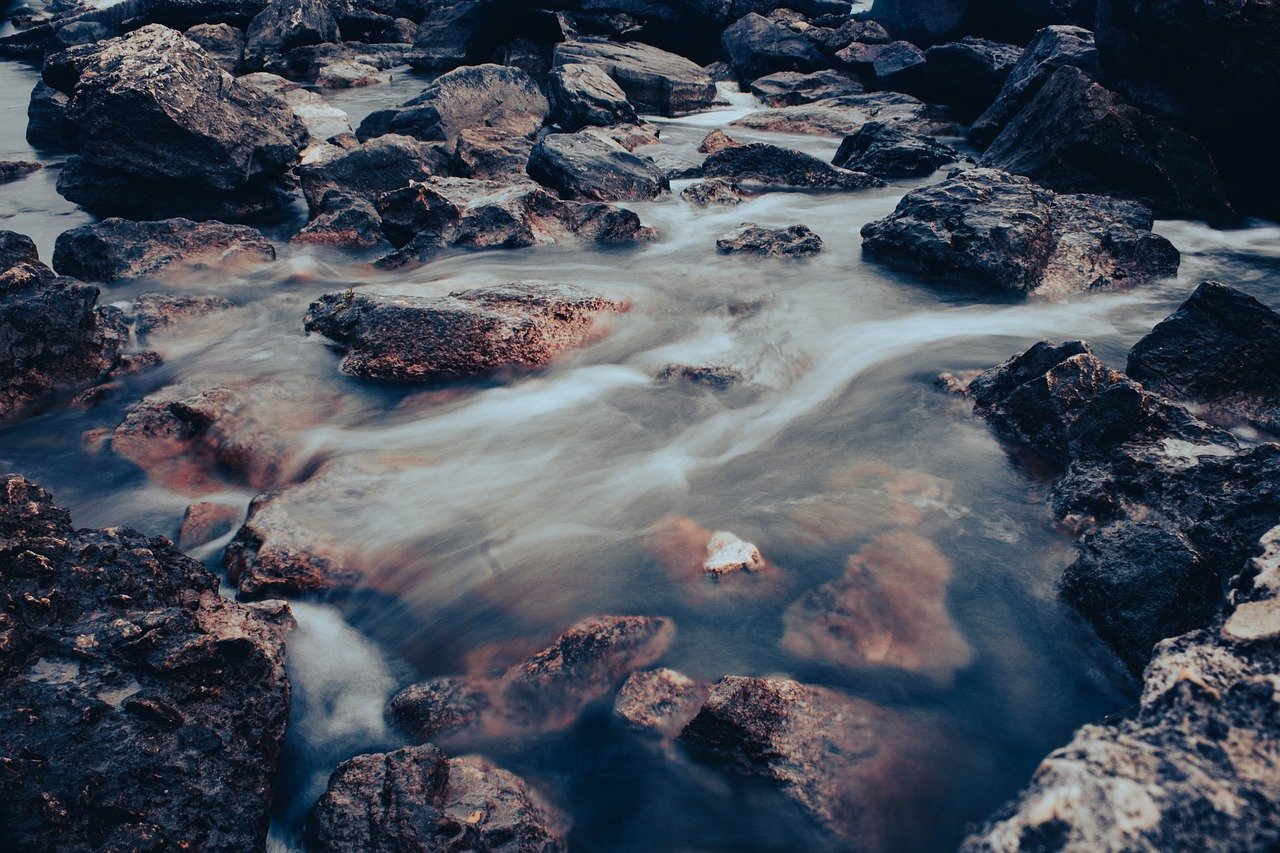
Understanding Personal Safety
When you're traveling, understanding personal safety is not just important; it's essential. Imagine you're exploring a vibrant market in a far-off country or wandering through a quiet alleyway in a new city. The thrill of adventure is exhilarating, but it's crucial to maintain a sense of awareness about your surroundings. Personal safety encompasses a range of practices that help you stay alert and proactive, minimizing risks as you explore new destinations. By taking the time to educate yourself about safety measures, you can enjoy your travels without unnecessary worry.
One of the first steps in ensuring your safety is to cultivate a mindset of awareness. This means being conscious of what's happening around you at all times. Whether it's noticing the people in your vicinity or being aware of your belongings, staying alert can help you avoid potential dangers. Think of it like being a detective in your own life; you need to gather clues about your environment to make informed decisions. Are the people around you behaving oddly? Is there something unusual about the area you're in? These questions can guide your instincts and help you navigate safely.
Proactive measures also play a significant role in personal safety. Before you even set foot in a new place, do some research. Familiarize yourself with the local customs, laws, and any areas that might be considered unsafe. You can create a quick reference table with important information, such as:
| Destination | Local Customs | Emergency Numbers |
|---|---|---|
| Country A | Respect local dress codes | 112 |
| Country B | Understand tipping practices | 911 |
Additionally, consider the importance of having a plan. Just like you wouldn’t embark on a road trip without a map, don’t travel without a safety strategy. This could include having emergency contacts saved on your phone, knowing the location of the nearest hospital, or even having a small first-aid kit in your bag. By preparing in advance, you can feel more confident and less anxious about potential threats.
In summary, understanding personal safety while traveling is about more than just avoiding danger; it's about empowering yourself to enjoy your journey fully. By staying aware, being proactive, and planning ahead, you can explore the world with a sense of confidence and security. Remember, it's not about living in fear; it's about being prepared and aware, so you can focus on making unforgettable memories.

Situational Awareness
When you're traveling, especially in unfamiliar places, becomes your best friend. Think of it as your internal radar system, constantly scanning your environment for anything that seems out of place. The goal here is to stay alert and engaged, rather than lost in thought or glued to your phone. By honing your awareness, you can spot potential threats before they escalate, giving you the upper hand in any situation.
You can enhance your situational awareness through a few simple techniques. First, make it a habit to observe your surroundings. Look for environmental cues like the behavior of people around you. Are they acting unusually? Is there a group that appears agitated or aggressive? These signs can serve as early warnings that something might be off. Your intuition is a powerful tool; if something feels wrong, it probably is. Listen to that gut feeling!
Being aware also means understanding the layout of your environment. Take a moment to familiarize yourself with exits, potential hiding spots, and crowded areas. This knowledge not only helps you navigate but also allows you to plan your escape routes in case of an emergency. Think of it like being a chess player; always anticipate your opponent's next move. The more you know about your surroundings, the better prepared you'll be to react swiftly.
In addition to personal vigilance, consider the people around you. Are they engaged and aware, or are they preoccupied? Group awareness is crucial, especially when traveling with others. Encourage your travel companions to stay alert and communicate any concerns. You can even establish a system where you check in with each other regularly. This way, if something feels off, you'll have a support system ready to act.
Finally, don’t underestimate the power of trusting your instincts. If you feel uncomfortable in a situation, it’s perfectly okay to leave or seek help. Remember, your safety is paramount, and sometimes, your gut feeling is the best guide you have. By staying aware and trusting yourself, you can navigate new environments with confidence and ease.
- What is situational awareness?
Situational awareness is the ability to perceive and understand your environment, allowing you to identify potential threats and respond appropriately. - How can I improve my situational awareness while traveling?
You can improve your situational awareness by being observant, familiarizing yourself with your surroundings, and trusting your instincts. - Why is group awareness important?
Group awareness fosters a safer environment as it encourages communication and vigilance among group members, making it easier to spot potential dangers.
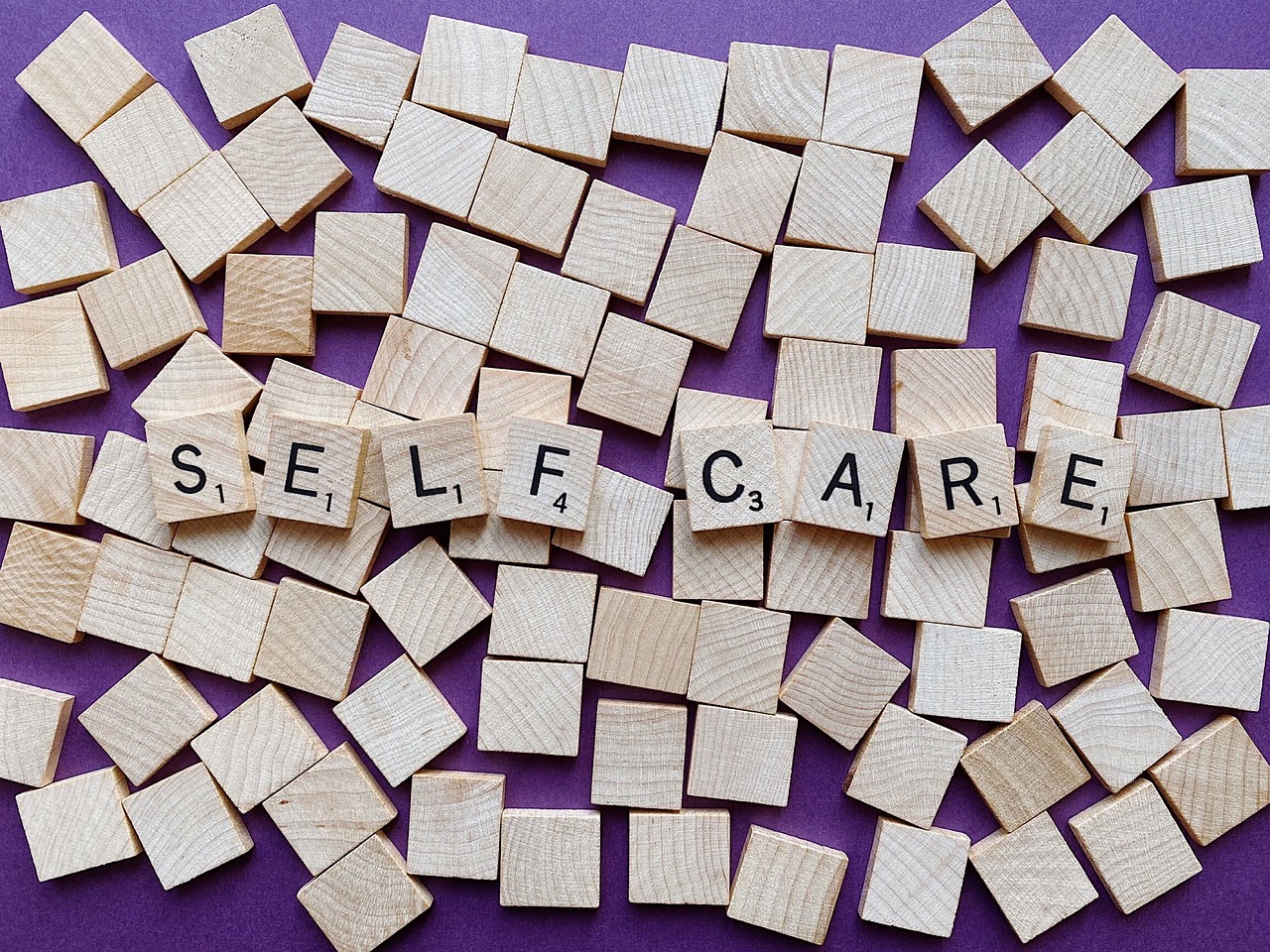
Identifying Potential Threats
When you're traveling, the last thing you want is to find yourself in a precarious situation. However, being aware of your surroundings and can make all the difference in ensuring your safety. Think of it like being a detective in your own life; you need to analyze your environment and pick up on subtle clues that could indicate danger. So, what should you be on the lookout for? Here are some key aspects to consider:
First, pay attention to the behavior of people around you. Are they acting unusually? For instance, if someone seems overly interested in you or is following you, that could be a red flag. Additionally, notice if there are groups of individuals who appear to be loitering or engaging in suspicious activities. A good rule of thumb is to trust your gut; if something feels off, it probably is.
Next, consider the environmental cues. This includes everything from the state of the area you're in to the general vibe of the neighborhood. Are the streets well-lit? Are there other people around? If you find yourself in a deserted area, it’s wise to be extra cautious. Sometimes, the physical space can tell you a lot about the safety of your surroundings. For example, crowded places can be safer than isolated ones, as there’s strength in numbers.
Moreover, understanding local customs and behaviors can significantly enhance your ability to identify threats. What might be considered normal behavior in your home country could be viewed differently elsewhere. For instance, in some cultures, direct eye contact might be seen as aggressive, while in others, it’s a sign of confidence. By learning these nuances, you can better gauge when something feels out of place.
Lastly, don't underestimate the power of trusting your instincts. Your intuition is a powerful tool. If you feel uncomfortable in a situation, it’s crucial to remove yourself from it. Think of your instincts as your personal alarm system; if it goes off, take it seriously. Whether it's changing your route, seeking out a safe space, or even asking for help, listening to your gut can keep you out of harm's way.
In summary, identifying potential threats while traveling is about being observant and proactive. By honing your awareness of people and environmental cues, understanding cultural differences, and trusting your instincts, you can navigate unfamiliar territories with confidence. Remember, safety is not just about avoiding danger; it's about being prepared to recognize it when it arises.
- What should I do if I feel threatened while traveling?
If you feel threatened, trust your instincts and remove yourself from the situation as quickly as possible. Seek help from local authorities or find a safe place where you can regroup. - How can I improve my situational awareness?
Practice being present in your environment. Take note of your surroundings, the people around you, and any unusual behavior. Regularly checking in with yourself about how you feel in a situation can also help. - Are there specific signs that indicate a potential threat?
Yes, signs can include someone following you too closely, groups of people loitering, or a sudden change in the behavior of those around you. Stay alert and trust your gut feelings.

Environmental Cues
When it comes to personal safety while traveling, can serve as your best friend. These cues are all around you, acting as subtle indicators of safety or danger. Think of them as the breadcrumbs that lead you to make informed decisions. For instance, if you find yourself in a bustling market, observe how the locals behave. Are they relaxed and friendly, or do they seem tense and watchful? Such observations can provide critical insights into the atmosphere of your surroundings.
One effective way to interpret these cues is to pay attention to body language. If someone approaches you with an open posture, smiling, and maintaining eye contact, it’s likely they’re just being friendly. Conversely, if someone is lurking in the shadows, avoiding eye contact, or exhibiting aggressive gestures, it might be time to reassess your surroundings. Recognizing these signs can help you navigate through unfamiliar territories with more confidence.
Another aspect to consider is the overall environment. Are there signs of distress or chaos, such as loud arguments or a sudden change in the crowd's behavior? These can be red flags indicating that it might be wise to leave the area. Always trust your gut—if a place feels off, it probably is. It’s akin to crossing a street; if you see a car speeding towards you, you don’t wait to see if it will stop—you move out of the way!
Moreover, environmental cues also include sound. The sounds around you can be incredibly telling. If you hear sirens or shouting, it's a good idea to be cautious and stay alert. On the flip side, if the area is filled with laughter and music, it might indicate a safe and festive atmosphere. Thus, tuning into both visual and auditory cues can significantly enhance your situational awareness.
In conclusion, being aware of environmental cues is an invaluable skill for travelers. By observing people’s behavior, interpreting body language, and listening to the sounds around you, you can make better decisions that keep you safe. Remember, your safety is in your hands, and these cues are your guiding light in unfamiliar places!
- What should I do if I feel unsafe in a foreign country? Trust your instincts, seek a crowded area, and consider contacting local authorities if necessary.
- How can I improve my situational awareness? Practice observing your surroundings regularly, and engage in activities that require focus, like hiking or city tours.
- Are there specific signs of danger I should look for? Yes, look for aggressive body language, unusual behavior in crowds, and any sounds that seem out of place.

Trusting Your Instincts
When it comes to personal safety, one of the most powerful tools at your disposal is your own intuition. Have you ever had that nagging feeling in the pit of your stomach that something just wasn’t right? That’s your instincts kicking in, and ignoring them can lead to dangerous situations. Trusting your instincts is like having a built-in GPS for your safety; it guides you away from potential threats and towards secure environments.
Imagine walking down a dimly lit street and suddenly feeling uneasy. Instead of brushing it off as paranoia, take a moment to assess the situation. Are there people loitering nearby? Is the area unusually quiet? Your instincts are trying to communicate with you, urging you to be cautious. Listening to these feelings can be the difference between a safe journey and a regrettable experience.
It’s crucial to remember that your instincts are often shaped by your past experiences. For example, if you’ve encountered a similar situation before, your brain will draw on that memory to help you navigate the current one. This is why it’s important to stay aware of your surroundings and to reflect on your feelings. If something feels off, don’t hesitate to change your route or seek help. Your safety is paramount, and trusting your gut can be your first line of defense.
Sometimes, your instincts may signal a threat even when there are no obvious signs. This phenomenon is often referred to as a "gut feeling." It’s essential to cultivate this awareness and not dismiss it as mere anxiety. Here are a few tips to help you enhance your ability to trust your instincts:
- Practice mindfulness: Regular mindfulness exercises can help you become more attuned to your feelings and surroundings.
- Reflect on past experiences: Take time to think about previous situations where your instincts were right. This reflection can reinforce your trust in them.
- Stay connected: Engage in conversations with fellow travelers or locals, and share your feelings. You might find that others have had similar experiences.
In conclusion, trusting your instincts is not just about feeling safe; it’s about empowering yourself to make informed decisions. Your gut feelings are there for a reason, and by honing this skill, you can navigate unfamiliar environments with confidence. Always remember: when in doubt, listen to that inner voice—it could very well be your best ally in staying safe while traveling.
Q: How can I improve my situational awareness while traveling?
A: You can improve your situational awareness by staying alert to your surroundings, avoiding distractions like your phone, and regularly scanning the area for any unusual behavior or changes.
Q: What should I do if I feel uncomfortable in a situation?
A: If you feel uncomfortable, trust your instincts. Change your route, seek help from others, or find a safe place until you feel secure again.
Q: Are there specific signs I should look for that indicate a potential threat?
A: Yes, look for signs such as people acting suspiciously, an area that feels unusually quiet, or individuals who seem to be following you. Trust your gut feelings about these situations.
Q: How can I practice trusting my instincts?
A: You can practice by reflecting on past experiences where you felt your instincts were right, engaging in mindfulness exercises, and paying attention to your feelings in various situations.
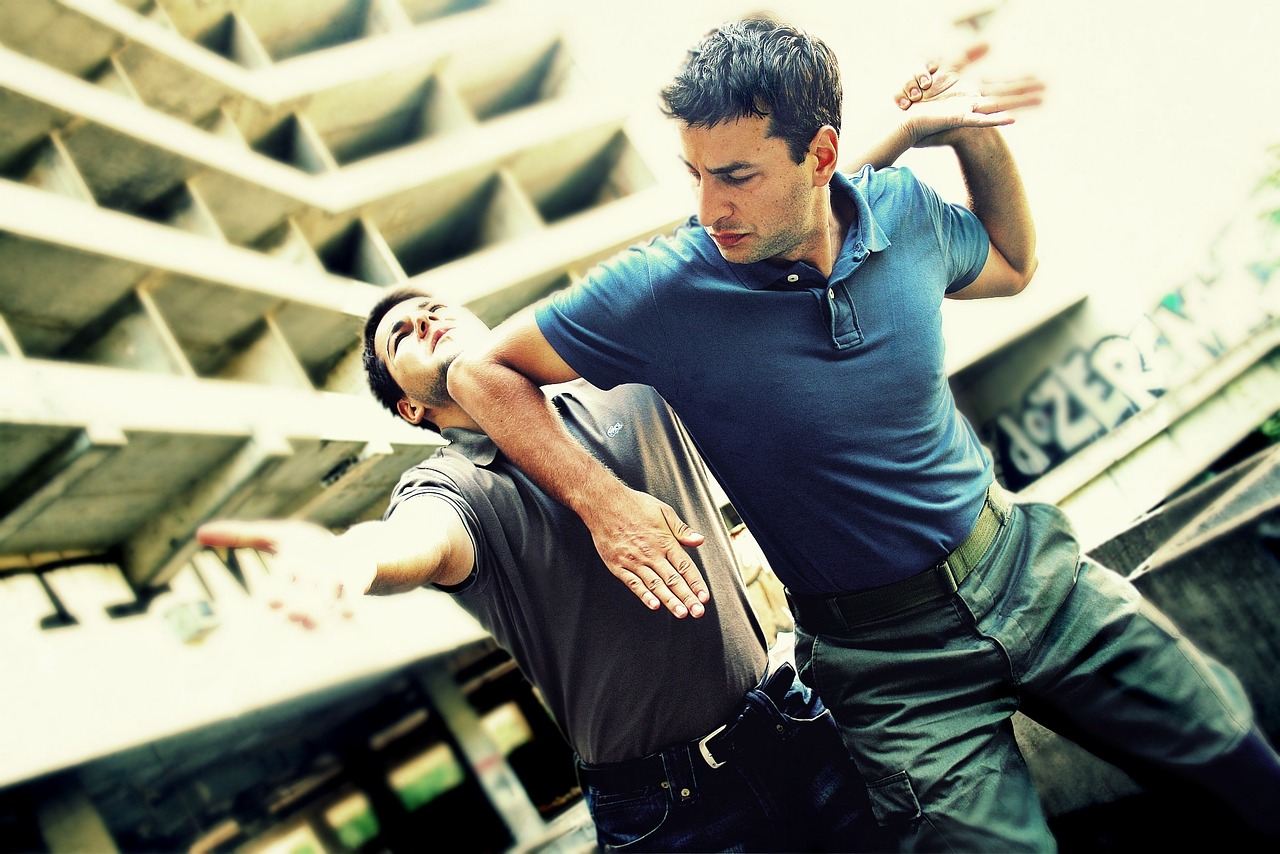
Responding to Threats
When it comes to personal safety, knowing how to respond to threats can be a game changer. Imagine you're wandering through a vibrant market in a foreign city, and suddenly you feel that prickling sensation on the back of your neck—something’s not right. In these moments, your response can mean the difference between a minor scare and a serious situation. It’s crucial to have a plan in place, and that starts with understanding how to de-escalate potential threats and when to seek help.
First off, let’s talk about de-escalation techniques. The goal here is to diffuse a tense situation before it escalates into something more dangerous. This can often be achieved through simple yet effective communication strategies. For instance, maintaining a calm demeanor, using a steady voice, and making non-threatening body language can significantly reduce the tension. You might consider saying something like, “I don’t want any trouble,” while keeping your hands visible and relaxed. This approach signals to the potential aggressor that you’re not a threat, which can sometimes be enough to defuse the situation.
Moreover, it’s important to assess the situation quickly. Ask yourself: Is this person looking for trouble, or are they just having a bad day? If you feel that the threat is serious, it’s time to take action. Here’s where your instincts come into play. Trusting your gut feelings is vital; if something feels off, it probably is. In such cases, don’t hesitate to remove yourself from the situation as swiftly and safely as possible. Look for exits, and if you're in a crowded area, try to blend in with the crowd to avoid drawing attention.
Now, let’s say the threat escalates despite your best efforts. This is where knowing when to seek help becomes essential. If you’re in a public place, look for security personnel or local authorities. You can also use your phone to call for help if necessary. Here’s a quick tip: always have local emergency numbers saved in your phone before you travel. This way, you won’t be fumbling for numbers in a stressful situation.
In addition, consider the importance of creating a support network while you travel. This could be fellow travelers, friends, or even locals you’ve met. Having someone to rely on can provide you with an extra layer of safety. If you’re ever feeling uneasy, reach out to your support network for advice or assistance. Remember, safety in numbers is not just a saying; it’s a proven strategy!
Lastly, keep in mind that your safety is paramount. In some situations, it may be best to comply with an aggressor's demands if you feel that it will keep you safe. Material possessions can be replaced, but your well-being is irreplaceable. Always prioritize your safety above all else.
- What should I do if I feel threatened while traveling?
Trust your instincts and try to remove yourself from the situation. Seek help from local authorities or security if necessary.
- How can I improve my situational awareness?
Practice being more observant of your surroundings. Pay attention to the behavior of people around you and look for anything that seems out of the ordinary.
- Are there self-defense classes available for travelers?
Yes! Many cities offer self-defense classes tailored for travelers. Look for local gyms or community centers that provide these services.
- What items can I carry for self-defense?
Common items like a pen, keys, or even a small flashlight can be used effectively in self-defense situations.
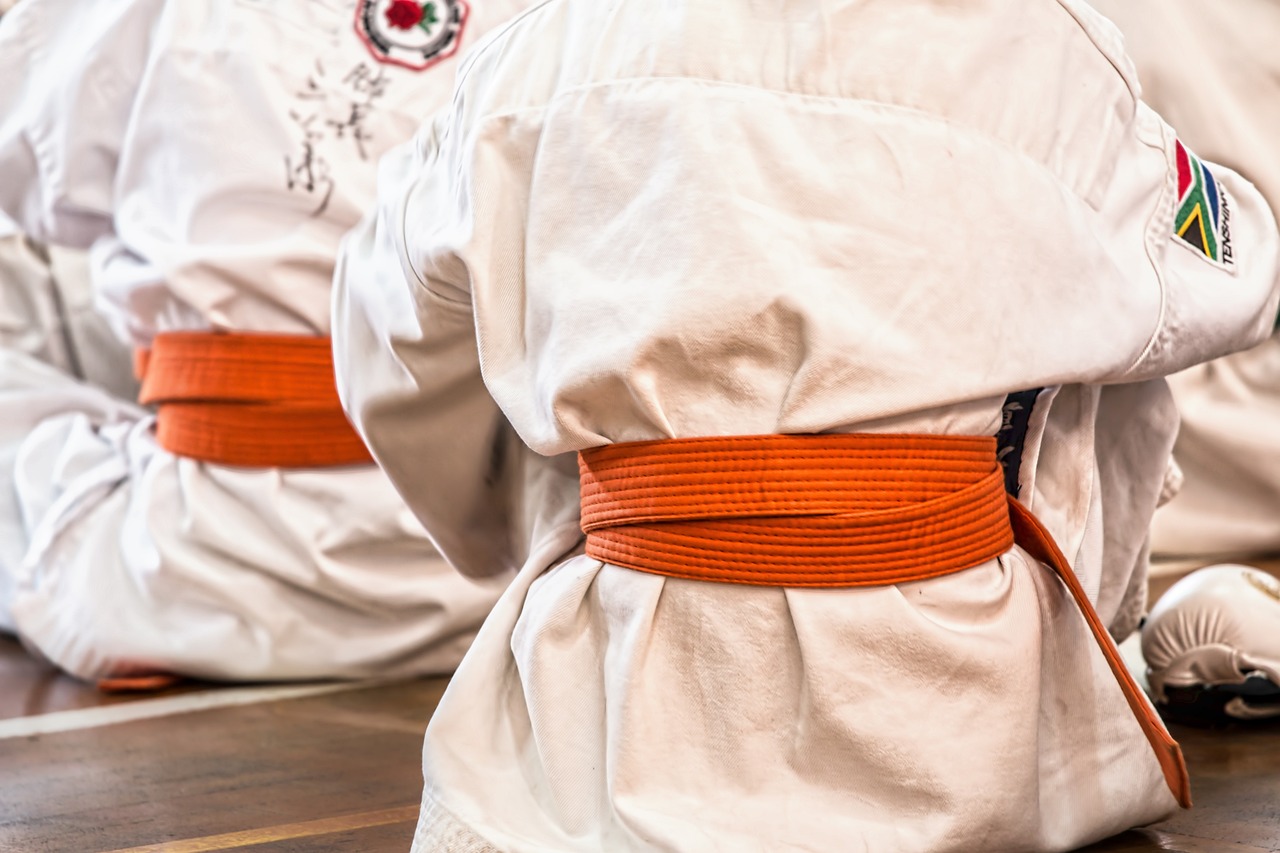
Basic Self-Defense Techniques
When it comes to self-defense, having a few basic techniques under your belt can make a world of difference, especially for travelers who may find themselves in unfamiliar or potentially dangerous situations. Think of these techniques as your safety toolkit, ready to be utilized when the unexpected happens. Whether you’re exploring a bustling market or wandering through a quiet alley, knowing how to protect yourself can enhance your confidence and peace of mind.
One of the most fundamental aspects of self-defense is understanding your body mechanics. For instance, your body can be a powerful weapon if used correctly. Striking techniques, such as a simple palm strike or a knee to the groin, can incapacitate an attacker quickly, allowing you to escape. It’s not about being the strongest; it’s about using your body efficiently. Here’s a quick overview of some effective striking techniques:
| Technique | Description |
|---|---|
| Palm Strike | A powerful strike using the heel of your palm aimed at the attacker's nose or chin. |
| Knee Strike | Bringing your knee up into an attacker's groin or stomach, which can cause immediate pain and distraction. |
| Elbow Strike | An effective close-range strike that can be aimed at the head or face of an attacker. |
In addition to striking, knowing how to escape holds is crucial. If you find yourself grabbed or restrained, don’t panic! There are specific techniques designed to help you break free. For example, if someone grabs your wrist, twisting your arm and stepping back can create space and allow you to escape. Understanding how to leverage your body weight and use your center of gravity can significantly enhance your ability to break free from various grabs.
It’s also essential to keep in mind that self-defense is not just about physical techniques. Your mindset plays a pivotal role. Adopting a defensive posture can deter potential attackers. Stand tall, keep your hands up, and maintain eye contact with your surroundings. This body language conveys confidence and can make you less appealing as a target. Remember, a confident traveler is often a safer traveler!
In situations where you might need to defend yourself, improvisation can be key. Everyday items can become effective self-defense tools. For example, a pen can be used to jab at an attacker, while a water bottle can be swung as a makeshift weapon. The beauty of self-defense is that you don’t always need specialized training; you can use what you have at hand to protect yourself.
As you prepare for your travels, consider practicing these techniques. Many community centers and gyms offer self-defense classes that can help you build your skills and confidence. Engaging in these classes not only teaches you practical techniques but also helps you connect with others who share similar interests in personal safety. It’s a great way to learn, build camaraderie, and ensure that you’re ready for whatever adventures lie ahead!
Q: Do I need to be physically strong to defend myself?
A: Not at all! Self-defense techniques focus on using your body efficiently and leveraging your weight, rather than relying on brute strength.
Q: What if I don’t have time to learn self-defense techniques before I travel?
A: While it’s beneficial to learn some techniques, being aware of your surroundings and trusting your instincts are equally important. Stay alert and make smart choices.
Q: Can everyday items really be used for self-defense?
A: Yes! Many common items can serve as effective self-defense tools. Just remember to think creatively and use what you have available.

Striking Techniques
When it comes to self-defense, understanding can be a game changer. These techniques are not just about brute strength; they rely on precision, speed, and knowing where to hit. Imagine being in a situation where you need to defend yourself—having the right striking technique can mean the difference between escaping safely and becoming a victim. So, let’s dive into some effective striking techniques that every traveler should know.
First and foremost, the palm strike is a fantastic technique that anyone can master. Unlike punches, which can sometimes lead to injury if executed incorrectly, a palm strike utilizes the broader surface area of your palm to deliver a powerful blow to an attacker's nose or chin. This not only causes pain but can also disorient your assailant, giving you a crucial moment to escape. When performing a palm strike, aim for the center of the attacker's face and thrust your palm forward with force.
Another effective technique is the knee strike. This is particularly useful in close combat situations where your assailant is too close for a proper punch. By lifting your knee sharply into your attacker's groin, you can incapacitate them momentarily. This strike is not only powerful but also easy to execute. Just remember to keep your balance; a well-placed knee strike can create the opening you need to flee.
Let’s not forget about the elbow strike, which is incredibly effective at short distances. The elbow is one of the hardest parts of your body, and when used correctly, it can deliver a devastating blow to an attacker’s face or temple. To execute this technique, pull your arm back and then thrust your elbow forward, aiming for the target. This technique can be particularly useful if you're grabbed from behind—simply strike backward with your elbow to create space.
For those who want to go a step further, consider learning some basic kicking techniques. A well-placed kick can be a powerful deterrent. The front kick, for example, is great for keeping an attacker at bay. Aim for the knee or stomach; the goal is to create distance and give yourself time to escape. Kicking may seem daunting, but with practice, you'll find it can be a highly effective tool in your self-defense arsenal.
To summarize, striking techniques are essential for self-defense, especially when you're navigating unfamiliar environments while traveling. Here’s a quick recap of the techniques discussed:
- Palm Strike: A powerful blow to the face using the palm of your hand.
- Knee Strike: A sharp lift of the knee into the groin area.
- Elbow Strike: A devastating blow using the elbow at close range.
- Front Kick: A powerful kick aimed at the knee or stomach to create distance.
Remember, the key to effective self-defense is not just knowing these techniques but also practicing them until they become second nature. When you're confident in your ability to defend yourself, you can travel with a greater sense of peace and security.
Q: Do I need special training to use these striking techniques?
A: While formal training can enhance your skills, basic understanding and practice can make a significant difference. Many techniques can be learned through online tutorials or self-defense workshops.
Q: Are these techniques safe to practice?
A: Yes, as long as you practice in a controlled environment and respect your partner's safety if training with someone else. Always prioritize safety and use protective gear when necessary.
Q: What if I’m not strong enough to defend myself?
A: Self-defense is about technique, not just strength. Many effective techniques rely on speed, precision, and using your body’s natural mechanics to your advantage.
Q: How can I remember these techniques in a stressful situation?
A: Regular practice is key. Repetition will help commit these techniques to muscle memory, making it easier to recall them in high-stress situations.

Escaping Holds
When it comes to personal safety, knowing how to escape holds is not just a skill; it's a crucial lifeline. Imagine being caught in a tight grip, feeling the panic rise as you realize the potential danger. But fear not! With the right techniques, you can break free and regain control. Understanding the mechanics of your body and the attacker’s grip is essential. The key is to stay calm and react swiftly, using your body’s natural movements to your advantage.
First, let’s explore some basic principles that will help you escape from various holds. The most important factor is to stay aware of your surroundings. If you find yourself in a situation where someone grabs you, remember these fundamental strategies:
- Stay relaxed: Tension can make it harder to escape. The more relaxed you are, the more fluid your movements will be.
- Use leverage: Your body can be more effective than sheer strength. Focus on using your weight and the angle of your body to create leverage against the hold.
- Target vulnerable areas: If necessary, aim for sensitive spots like the eyes, throat, or groin to distract your attacker and create an opportunity to break free.
Now, let’s break down some specific holds and how to escape from them:
| Type of Hold | How to Escape |
|---|---|
| Wrist Grab | Rotate your wrist towards the attacker’s thumb while stepping back to break free. |
| Bear Hug (from behind) | Drop your weight and twist your body to create space. Use your elbow to strike the attacker. |
| Choke Hold | Use your hands to create space by pushing against the attacker's arm, then turn your head to slip out. |
Practicing these techniques can significantly enhance your confidence and ability to respond in high-pressure situations. Consider enrolling in a self-defense class that focuses on real-life scenarios. Practicing with a partner can also help you understand how to apply these techniques effectively.
In conclusion, escaping holds is about understanding the dynamics of the situation and acting quickly. Remember, your goal is not just to escape but to create an opportunity to get away safely. With practice and awareness, you can turn what could be a frightening encounter into a moment of empowerment.
Q: What should I do if I’m grabbed from behind?
A: If grabbed from behind, try to drop your weight, twist your body, and use your elbows to strike or create space. This can help you break free.
Q: Are there specific self-defense classes you recommend?
A: Look for classes that focus on practical self-defense techniques, such as Krav Maga or Brazilian Jiu-Jitsu, as they often teach effective ways to escape holds.
Q: Can I practice these techniques alone?
A: While practicing alone can help with understanding the movements, it’s best to practice with a partner to simulate real scenarios and build muscle memory.

Using Everyday Items as Weapons
When it comes to self-defense, being prepared often means thinking outside the box. You might not always have access to traditional weapons, but the good news is that everyday items can be transformed into effective tools for protection. Imagine walking down a bustling street and suddenly feeling threatened. Instead of panicking, you can quickly assess your surroundings and utilize what you have on you. This is not just about being resourceful; it's about empowering yourself with the knowledge that you can defend against potential threats using items you encounter in your daily life.
First and foremost, consider the items you typically carry. A pen, for instance, can be a surprisingly effective weapon. If you find yourself in a dangerous situation, you can use it to jab at an attacker's sensitive areas such as the eyes or throat. Similarly, your keychain can be more than just a means to unlock your door. By holding your keys between your fingers, you can create a makeshift weapon that can inflict pain if you need to strike. The element of surprise is on your side when you use ordinary objects in extraordinary ways.
Moreover, think about the potential of larger items like a water bottle or an umbrella. A filled water bottle can be swung to deliver a solid strike, while an umbrella can be used to block attacks or even jab at an assailant. These items are not only practical for everyday use but can also serve as a shield or a weapon in a pinch. It’s about being aware of your environment and recognizing that safety can come from the most unexpected places.
Here’s a quick rundown of some common items and how they can be used for self-defense:
- Backpack: A heavy backpack can be swung or used to shield yourself.
- Phone: Besides calling for help, a phone can be used to hit an attacker or distract them.
- Scarf: A scarf can be used to choke or restrain an assailant if necessary.
In addition to using these items as weapons, adopting a defensive posture can also deter attackers. Stand tall, keep your hands up, and appear confident. This body language can make you seem less like a target and more like someone who is prepared to defend themselves. Remember, the goal is to create a situation where the assailant thinks twice before approaching you.
Ultimately, the best defense is a combination of awareness, confidence, and resourcefulness. By familiarizing yourself with the potential of everyday items, you can turn the mundane into a means of protection. So, the next time you step out, take a moment to evaluate what you have on hand and how it could help you stay safe. You never know when you might need to think on your feet!
Q: Can I really use everyday items for self-defense?
A: Absolutely! Many common items can be effectively used for self-defense. It's all about understanding how to utilize them in a moment of need.
Q: What should I carry with me for self-defense?
A: Consider carrying items like a pen, keys, or a small flashlight. These can easily be accessed and used in a pinch.
Q: Is it legal to use everyday items for self-defense?
A: Laws vary by location, so it's essential to familiarize yourself with local laws regarding self-defense. Generally, using items for self-defense is legal as long as it is proportional to the threat.
Q: How can I improve my self-defense skills?
A: Taking self-defense classes, practicing situational awareness, and regularly assessing your environment can significantly enhance your skills.

Improvised Weapons
When it comes to self-defense, being resourceful can make all the difference. are everyday items that can be quickly transformed into defensive tools in a pinch. Imagine walking through a bustling market or an unfamiliar street, and suddenly you feel threatened. Instead of panicking, you can look around and find something that can help you. This is where your creativity and awareness come into play.
Common objects that you might carry can serve as effective improvised weapons. For instance, a pen can be a powerful tool; a quick jab can create enough distance between you and an attacker. Similarly, a keychain can be used to strike or poke, especially if you hold it between your fingers. Even a water bottle can be utilized to throw at an assailant, providing you with a moment to escape.
Here are some everyday items that can be used as improvised weapons:
- Umbrella: A sturdy umbrella can be used to jab or block an attacker.
- Backpack: Swinging a heavy backpack can create a barrier or distraction.
- Scarf or Belt: These can be used to entangle an attacker's limbs or to create distance.
However, it’s not just about the item itself; it’s also about how you use it. Positioning is key. For example, if you’re holding a drink, you can throw it in the attacker’s face to blind them momentarily. The element of surprise can be your greatest ally. Always remember that the goal is to create an opportunity to escape rather than to engage in a prolonged confrontation.
In addition to physical items, your surroundings can also provide makeshift weapons. A rock or a stick can be picked up in an emergency, and even a handful of sand or dirt can be thrown to distract an attacker. The more aware you are of your environment, the better prepared you will be to defend yourself. Remember, the best weapon is often the one you have on hand!

Defensive Posture
When it comes to self-defense, adopting a can be your first line of defense. Imagine you're in a crowded market, and you feel a sense of unease creeping in. Your body language can either invite trouble or deter it. Standing tall with your shoulders back and your hands slightly raised can signal confidence and readiness. This stance not only makes you appear less vulnerable but also prepares you to react quickly if necessary.
Think of your body as a shield. A strong defensive posture allows you to protect vital areas while keeping your options open. Here are some key elements to consider when adopting a defensive stance:
- Feet Shoulder-width Apart: This gives you a stable base, allowing for quick movements in any direction.
- Relaxed Hands: Keep your hands up around your face, but don’t clench them into fists. This shows you're ready to defend without appearing aggressive.
- Maintain Eye Contact: Keep your eyes on potential threats. This not only shows confidence but also helps you assess the situation more effectively.
Additionally, practice makes perfect. The more you train your body to adopt this posture, the more natural it will feel in real-life situations. Consider enrolling in a self-defense class where you can practice these techniques with others. Remember, a defensive posture is not just about physical readiness; it’s also about mental preparedness. Stay alert, trust your instincts, and be aware of your surroundings.
In the end, a well-executed defensive posture can be your best friend when navigating unfamiliar places. It’s like wearing an invisible armor that not only protects you but also empowers you to take control of your safety. So, the next time you step out into the world, remember to stand tall and stay alert—your safety is worth it!
- What is a defensive posture? A defensive posture is a physical stance that prepares you to react to potential threats while displaying confidence and readiness.
- How can I practice my defensive posture? You can practice by standing in front of a mirror, focusing on your stance, and even incorporating it into your daily routine.
- Why is body language important in self-defense? Body language can deter potential attackers by projecting confidence and alertness, making you less appealing as a target.
- Can I use a defensive posture in non-threatening situations? Absolutely! Adopting a confident posture can enhance your overall presence and make you feel more empowered in various situations.
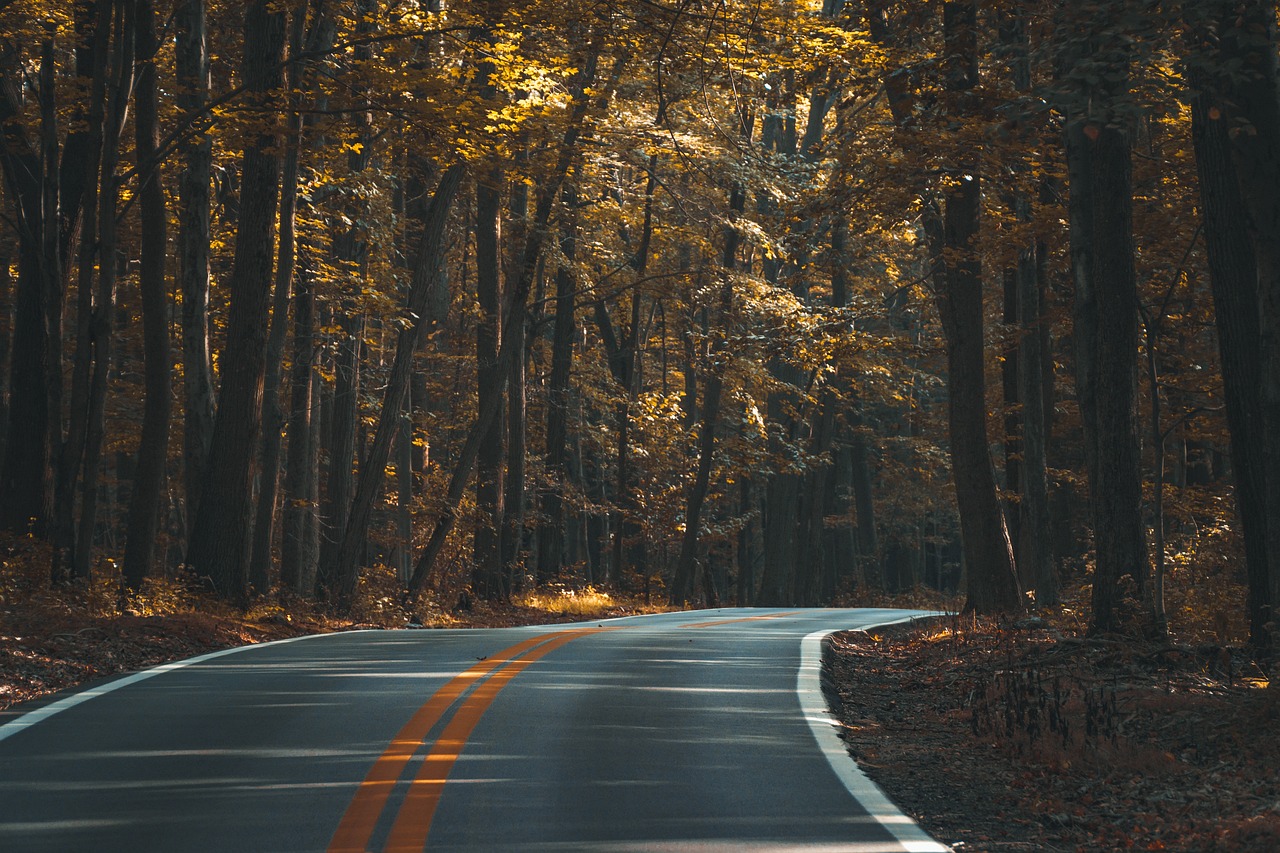
Traveling in Groups
Traveling in groups is not just a fun way to explore new places; it significantly enhances your safety. When you’re surrounded by friends or fellow travelers, there’s an innate sense of security that comes from being part of a collective. Think of it as having a personal safety net; the more people you have around you, the less vulnerable you feel. This is particularly important in unfamiliar environments where the unexpected can lurk around every corner.
One of the best strategies for maintaining safety while traveling in groups is to establish a buddy system. This means pairing up with someone in your group so that you always have an eye on each other. Whether you're wandering through a bustling market or enjoying a night out, having a buddy ensures that you're never truly alone. If one person needs to step away, the other can keep watch, which minimizes the chance of anyone getting lost or encountering trouble.
Moreover, group awareness is paramount. It’s essential for everyone to be vigilant and communicate openly about any concerns or observations. If someone in your group feels uneasy about a situation, it’s crucial to discuss it. This kind of proactive communication not only helps in identifying potential threats but also fosters a sense of camaraderie. When everyone is on the same page, you can navigate challenges more effectively.
Here are some tips to enhance safety while traveling in groups:
- Stay Together: Always try to stick close to your group, especially in crowded or unfamiliar areas.
- Designate a Leader: Choose someone to take charge of the itinerary and keep track of everyone, which can prevent any one person from being left behind.
- Regular Check-ins: Schedule times to regroup, especially if you’ve split up for activities. This ensures everyone is accounted for and feeling safe.
Finally, remember that safety in numbers doesn’t mean you should let your guard down. Even in a group, stay aware of your surroundings and trust your instincts. If something feels off, don’t hesitate to leave the situation. After all, the goal is to enjoy your travels while keeping safety a top priority. So pack your bags, grab your friends, and embark on an adventure that’s not only exciting but also secure!
Q: What should I do if I get separated from my group?
A: If you find yourself separated, try to retrace your steps to a familiar location. Use your phone to contact your group, and if you can’t reach them, look for a safe public place to wait for them.
Q: How can I ensure everyone in my group stays safe?
A: Establish clear communication before your trip, agree on safety protocols, and always check in with each other during your travels.
Q: What if someone in my group feels uncomfortable in a situation?
A: Take their feelings seriously. If someone feels uneasy, discuss the situation openly and consider leaving or changing your plans.

Buddy System
The is one of the oldest and most effective safety strategies for travelers. Imagine you're exploring a bustling market in a foreign city or wandering through a quiet street at dusk; having a buddy by your side can make all the difference. This approach not only enhances personal safety but also adds a layer of fun and companionship to your travels. When you and your travel partner look out for each other, you create a support system that can help mitigate risks and respond swiftly in case of an emergency.
Implementing the Buddy System is straightforward, yet it requires some thought and planning. Here are some key practices to consider:
- Stay Together: Always keep your buddy within sight. If you must separate, agree on a specific time and place to meet up again.
- Communicate: Regularly check in with each other, especially in crowded or unfamiliar environments. A simple text or a quick call can ensure both of you are safe.
- Establish Signals: Create non-verbal signals that can alert your buddy if you feel uncomfortable or see something suspicious. This can be a hand gesture or a specific phrase.
Moreover, the Buddy System isn't just about having someone to talk to; it's about fostering a sense of vigilance. When you're traveling with a partner, you can share the responsibility of being aware of your surroundings. For example, while one person is busy taking photos, the other can keep an eye on the environment, looking out for any potential threats. This shared awareness can significantly reduce the likelihood of encountering dangerous situations.
In addition to enhancing safety, traveling with a buddy can also enrich your travel experience. You can share the excitement of discovering new places, try local foods together, and create unforgettable memories. Plus, having someone to share stories with at the end of the day makes the journey all the more enjoyable.
Ultimately, the Buddy System is about empowerment. It encourages you to be proactive about your safety and to look out for one another. So next time you're planning a trip, consider finding a travel buddy. Not only will it make your adventure safer, but it will also make it more enjoyable!
Q: What if my travel buddy is not available?
A: If you find yourself without a buddy, it's essential to stay vigilant and aware of your surroundings. You can still implement safety measures like keeping your belongings secure, avoiding isolated areas, and staying connected with local contacts.
Q: How can I choose a reliable travel buddy?
A: A reliable travel buddy should be someone you trust and feel comfortable with. It's important to discuss safety expectations and agree on how you'll handle potential risks together.
Q: What should I do if I get separated from my buddy?
A: If you get separated, remain calm. Go to a pre-agreed meeting point, or contact your buddy via phone or messaging apps. If you feel unsafe, seek help from local authorities or nearby establishments.
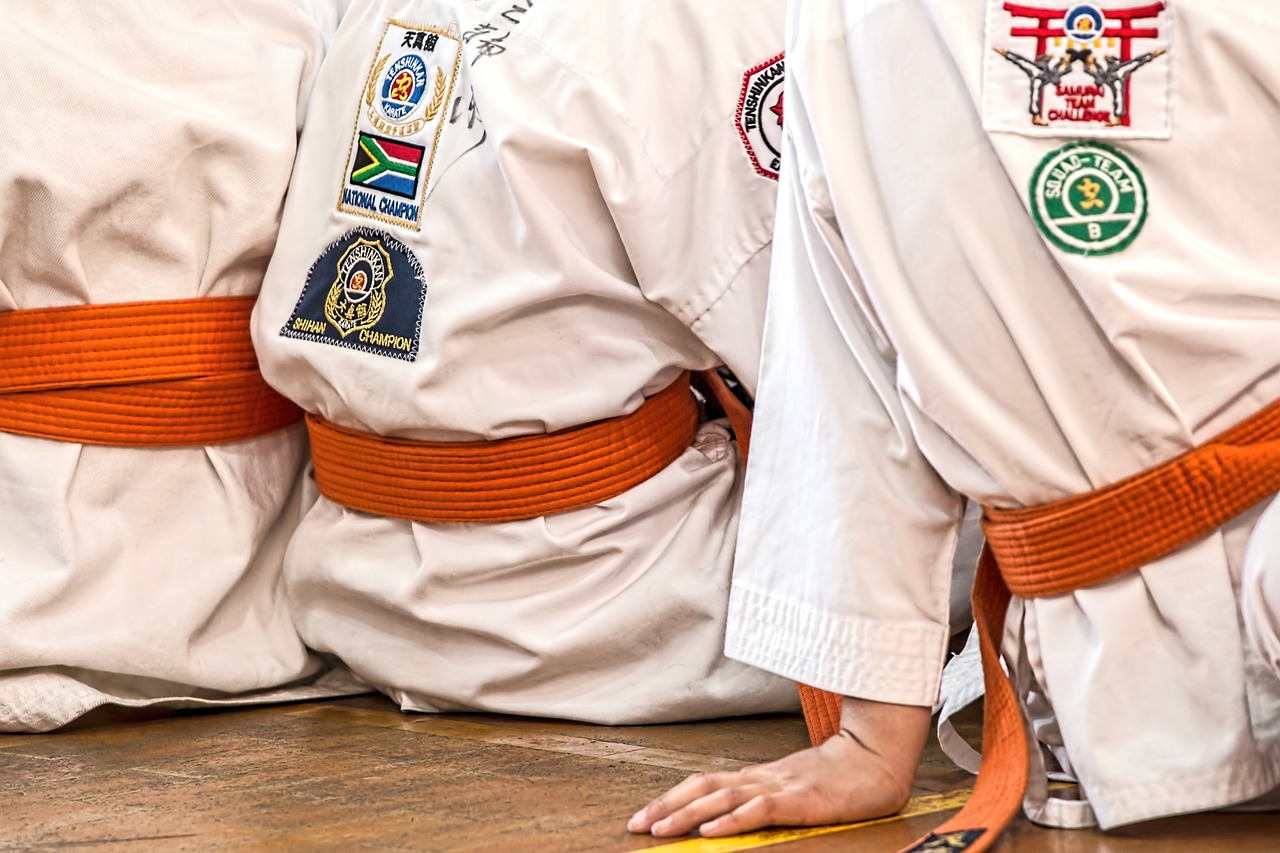
Group Awareness
When you're traveling with a group, the concept of becomes a cornerstone of your safety strategy. It's not just about sticking together; it's about actively engaging with one another and being vigilant about your surroundings. Think of your group as a small, interconnected web where each member is responsible for the safety of the others. This collective awareness can act like a safety net, catching any potential threats before they escalate into dangerous situations.
To foster group awareness, communication is key. Regularly check in with each other about your surroundings and share any observations that may seem unusual. For instance, if someone feels uneasy about a particular area or notices a suspicious individual, it's crucial to voice those feelings. Remember, your instincts can be a powerful tool, and they often resonate with others in the group. By discussing your observations openly, you create an environment where everyone feels empowered to speak up, enhancing the overall safety of the group.
Moreover, establishing a set of safety protocols before embarking on your journey can significantly enhance your group awareness. Consider the following:
- Designate a leader: Having a designated leader can streamline decision-making in case of emergencies.
- Set meeting points: Agree on specific locations to regroup in case anyone gets separated.
- Utilize technology: Use group messaging apps to stay connected, especially in crowded places.
Another aspect to consider is the importance of maintaining a low profile. While it might be tempting to flaunt your travel gear or share your itinerary with strangers, this can inadvertently attract unwanted attention. Encourage your group to dress and act like locals, blending in rather than standing out. This way, you can navigate through unfamiliar environments with more confidence and less risk.
Ultimately, group awareness is about creating a culture of safety within your travel group. By staying connected, communicating openly, and looking out for one another, you can significantly reduce the risks associated with traveling. Remember, safety is a shared responsibility, and when everyone plays their part, your adventures can be both thrilling and secure.
Q1: How can I improve group awareness while traveling?
A1: You can improve group awareness by establishing communication protocols, designating a leader, and regularly discussing your surroundings. Make sure everyone feels comfortable sharing their observations.
Q2: What should we do if someone in the group feels unsafe?
A2: If someone feels unsafe, take their concerns seriously. Discuss the situation as a group and decide on the best course of action, whether that's moving to a safer location or seeking assistance.
Q3: Are there specific tools or apps that can help with group awareness?
A3: Yes, apps like WhatsApp or GroupMe can help keep everyone connected. You can also use location-sharing apps to track each other's whereabouts in real-time.
Q4: How do we maintain a low profile while traveling?
A4: To maintain a low profile, dress like locals, avoid displaying expensive items, and refrain from discussing your travel plans with strangers. This can help you blend in and reduce the risk of attracting unwanted attention.
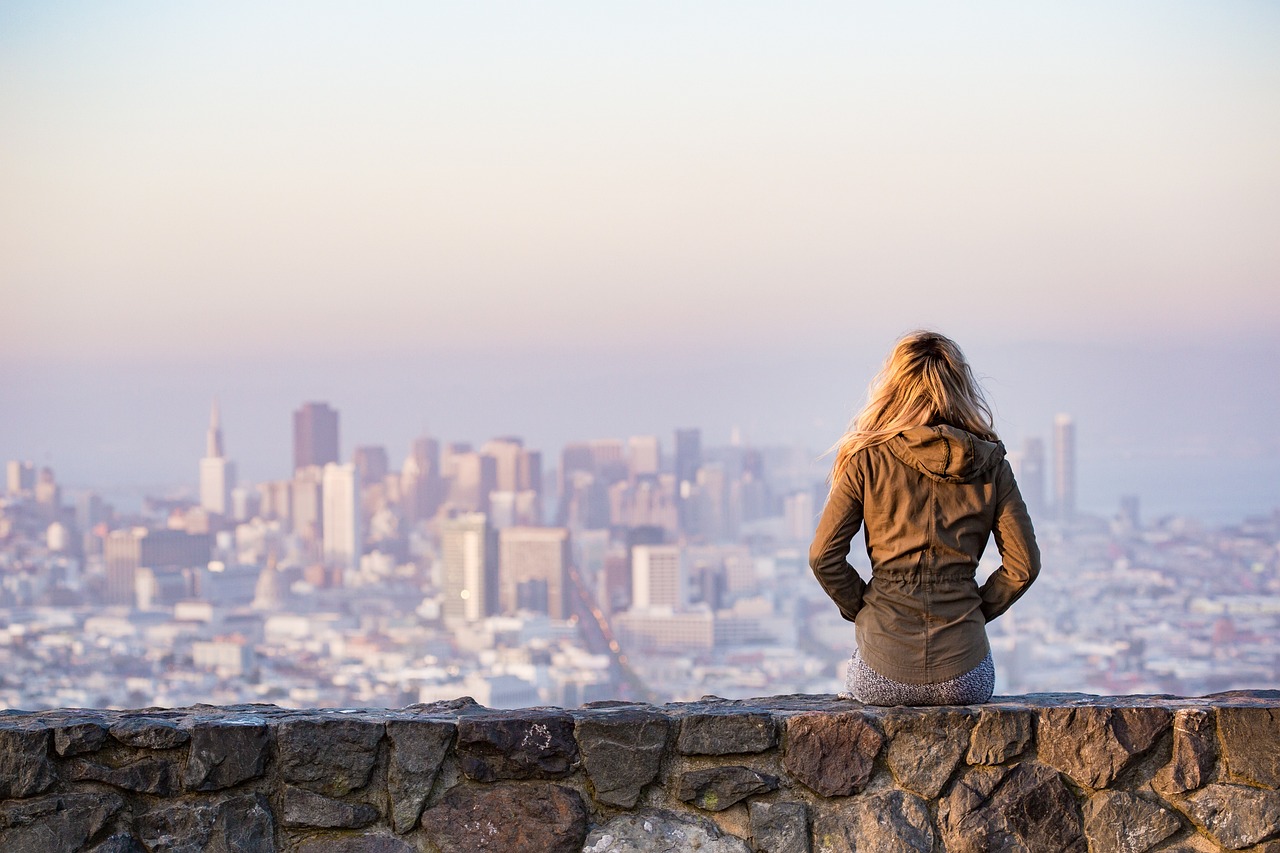
Emergency Contacts and Resources
Having reliable emergency contacts and resources is crucial for travelers, especially when exploring unfamiliar territories. Imagine finding yourself in a sticky situation—perhaps your wallet gets stolen or you encounter a medical emergency. In such moments, knowing who to call and where to seek help can make all the difference between a minor inconvenience and a major crisis.
Before you embark on your journey, take the time to prepare a comprehensive list of important contacts. This list should include not just local emergency numbers, but also the contact details of your country's embassy or consulate, local hospitals, and even trusted friends or family back home who can assist you if needed. It's a good idea to keep this information both digitally on your phone and in a physical format, such as a small note in your wallet or travel journal.
Here’s a simple table to help you organize your emergency contacts:
| Contact Type | Name | Phone Number | Notes |
|---|---|---|---|
| Local Emergency Services | Police/Fire/Ambulance | 112 (or local equivalent) | General emergency number |
| Embassy/Consulate | Your Country's Embassy | [Insert Phone Number] | Assistance for lost passports, legal issues, etc. |
| Local Hospital | [Insert Hospital Name] | [Insert Phone Number] | For medical emergencies |
| Family/Friends | [Insert Name] | [Insert Phone Number] | Emergency contact back home |
Additionally, it’s wise to familiarize yourself with local support services. This could include clinics, shelters, or even local safety apps that provide real-time information about your surroundings. Many countries have dedicated services for tourists, which can be a valuable resource. Don’t hesitate to ask locals for recommendations on where to find help, as they can often point you in the right direction.
Finally, remember that preparation is key. Take a few moments to memorize important numbers and keep your emergency contacts easily accessible. You never know when you might need them, and being prepared can help you navigate through any unexpected situations with confidence.
- What should I do if I lose my passport while traveling? Contact your embassy immediately for assistance in getting a replacement.
- How can I find local emergency numbers? Research online or ask your hotel staff for the appropriate numbers before you need them.
- Is it necessary to have travel insurance? Yes, travel insurance can provide peace of mind and financial support in case of emergencies.
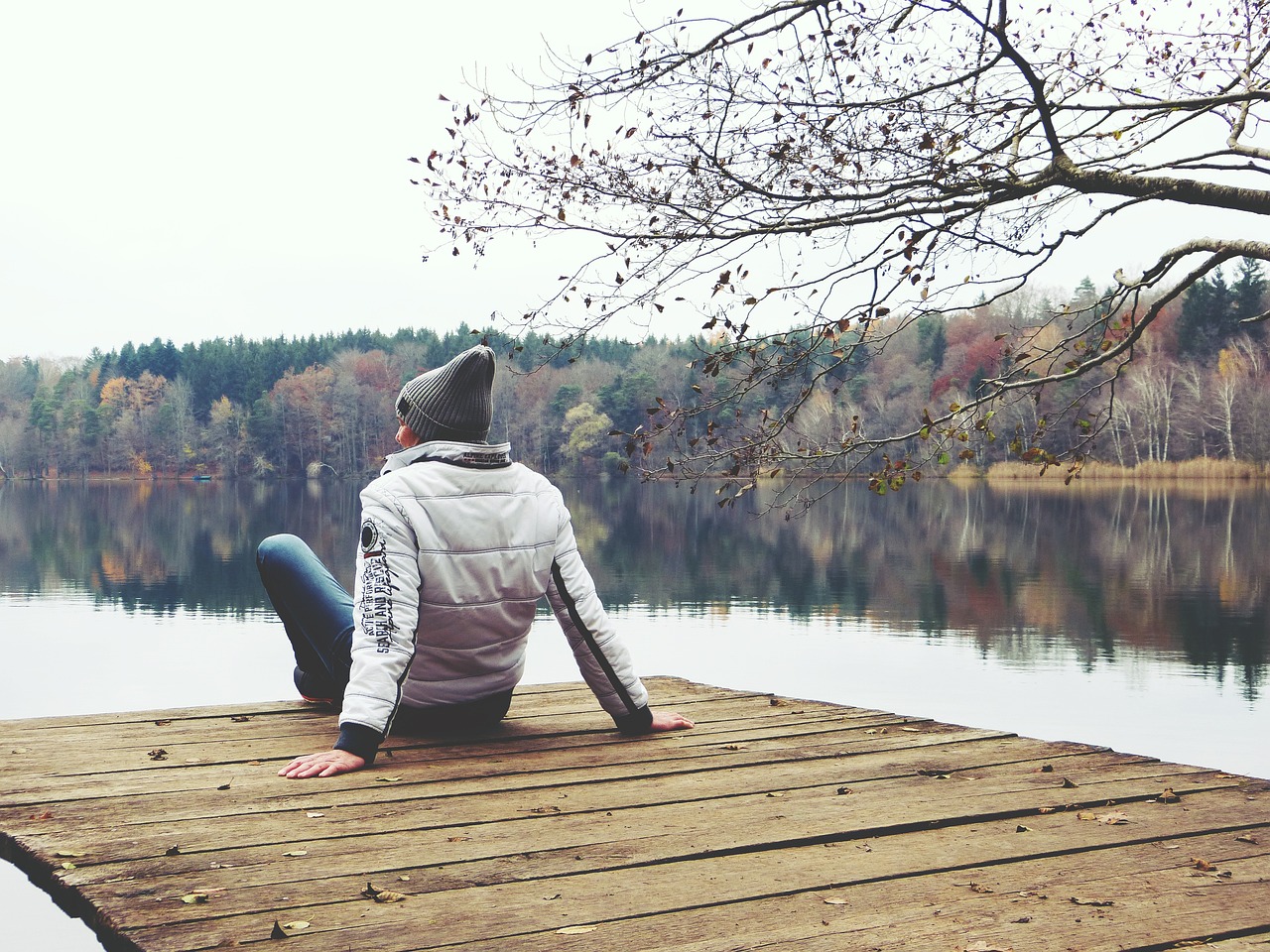
Local Emergency Numbers
Knowing is one of the most crucial aspects of travel safety. Imagine finding yourself in an unfamiliar city, and suddenly you need immediate assistance—whether it's a medical emergency, theft, or any other urgent situation. Having the right numbers at your fingertips can be a lifesaver. Before you embark on your adventure, take the time to research and memorize the emergency numbers specific to your destination. Each country has its own system, and being prepared can make a world of difference.
In many places, you can find a variety of emergency services under a single number. For instance, in the United States, dialing 911 connects you to police, fire, and medical services. However, in other countries, you might need to call different numbers for different services. Here’s a quick reference table to help you get started:
| Country | Emergency Number | Services Covered |
|---|---|---|
| United States | 911 | Police, Fire, Medical |
| United Kingdom | 999 | Police, Fire, Medical |
| Australia | 000 | Police, Fire, Medical |
| Canada | 911 | Police, Fire, Medical |
| Europe (EU) | 112 | Police, Fire, Medical |
Additionally, it’s wise to have a list of local non-emergency numbers. For example, knowing the contact information for your country's embassy or consulate can be invaluable if you encounter serious issues like passport loss or legal troubles. You can also jot down the contact numbers for local hospitals or clinics, taxi services, and even nearby accommodations. This way, you won’t be scrambling for information when seconds count.
Remember, technology can be your ally in emergencies. Downloading a travel app that includes local emergency contacts can be a smart move. These apps often provide real-time information and can even guide you to the nearest help. But, don't rely solely on your phone; having a physical copy of these numbers can be a lifesaver if your battery dies or you lose your device.
In summary, being informed about local emergency numbers and having them readily accessible can significantly enhance your safety while traveling. It’s not just about knowing who to call; it’s about being prepared, feeling confident, and ensuring that you can handle any situation that comes your way. So take a moment to do your research before you travel, and keep those numbers close at hand!
- What should I do if I can't remember the local emergency number?
Always carry a printed list of emergency contacts, or use offline maps that may have this information. - Are emergency numbers the same in every country?
No, each country may have different emergency numbers. It's essential to research the specific numbers for your destination. - How can I find the nearest hospital or clinic while traveling?
Use local maps or travel apps that can guide you to the nearest medical facilities.
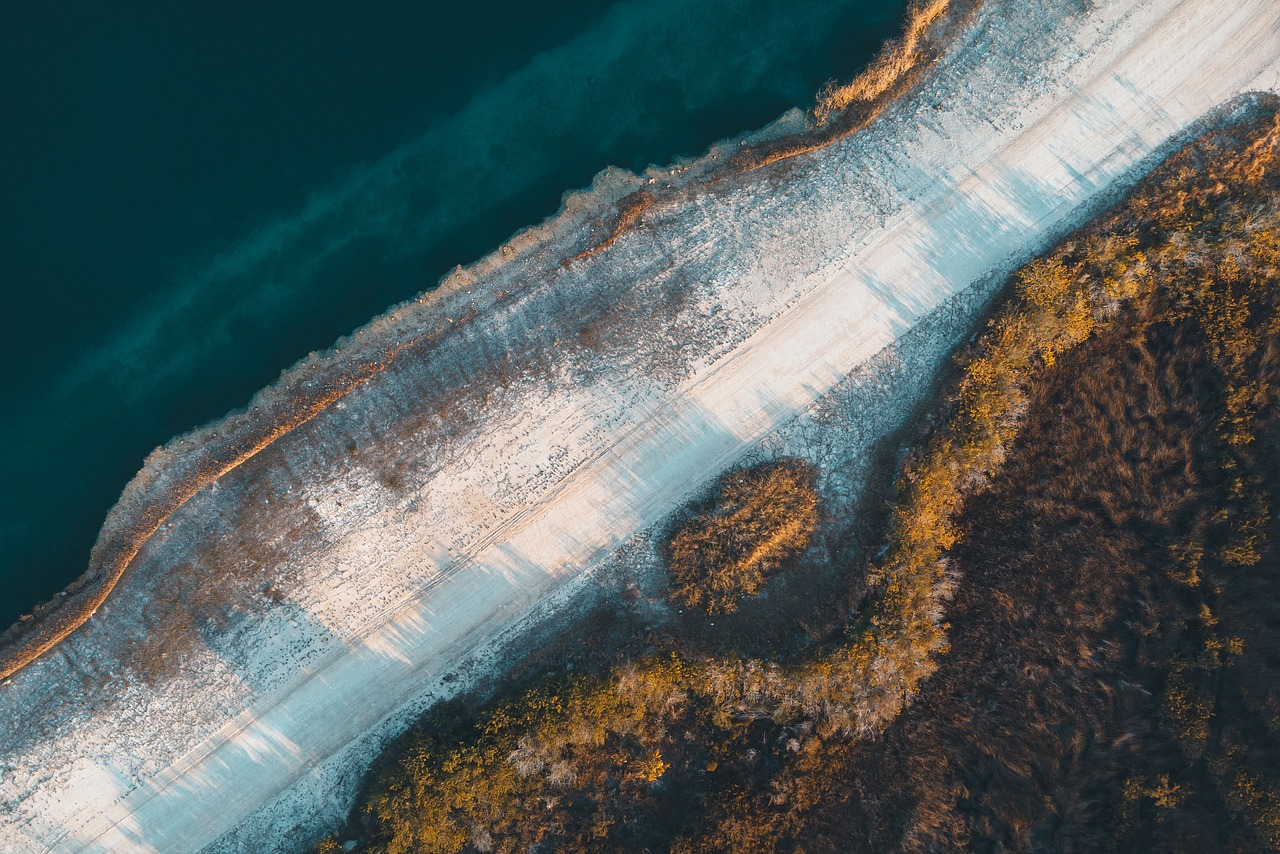
Accessing Local Support Services
When traveling, knowing how to access local support services can be a game-changer in emergencies. Imagine you're in a bustling foreign city, and suddenly, you find yourself in a precarious situation—perhaps you lost your wallet, or worse, you’ve been a victim of theft. In these moments, having a plan can make all the difference. First, it's crucial to familiarize yourself with the local emergency services before you even set foot in your destination. This means researching not only the emergency numbers but also understanding what services are available to you.
Most countries have a universal emergency number (like 911 in the U.S. or 112 in Europe), but knowing the specific services available in the area you’re visiting can help you respond more effectively. For instance, if you’re in a remote area, knowing the location of the nearest hospital or police station can be invaluable. You can often find this information through travel guides, local tourism websites, or even apps designed for travelers. Make a note of these contacts and keep them handy, perhaps in a travel app or a note in your phone.
Another useful tip is to connect with your hotel or accommodation staff. They can be a wealth of information regarding local support services. They can provide you with directions, contact numbers, and even accompany you if necessary. Additionally, many cities have tourist information centers where you can get brochures and maps that outline local resources. Don't hesitate to ask questions—it's better to be over-prepared than underprepared!
Furthermore, consider downloading a few essential apps that can assist you in emergencies. For example, apps that provide maps, local emergency numbers, and even translation services can be lifesavers. Here’s a quick table summarizing some useful apps:
| App Name | Function |
|---|---|
| Google Maps | Navigation and local business search |
| TripIt | Travel itinerary management |
| Emergency Numbers | Local emergency contact information |
| Google Translate | Language translation for communication |
In addition to these resources, always keep a list of important contacts, including your country’s embassy or consulate, local hospitals, and even trusted friends or family back home. Having this information readily available can provide peace of mind and quick access to help if needed. Remember, being proactive about your safety while traveling is not just about avoiding danger; it's about equipping yourself with the tools and knowledge to handle any situation that may arise.
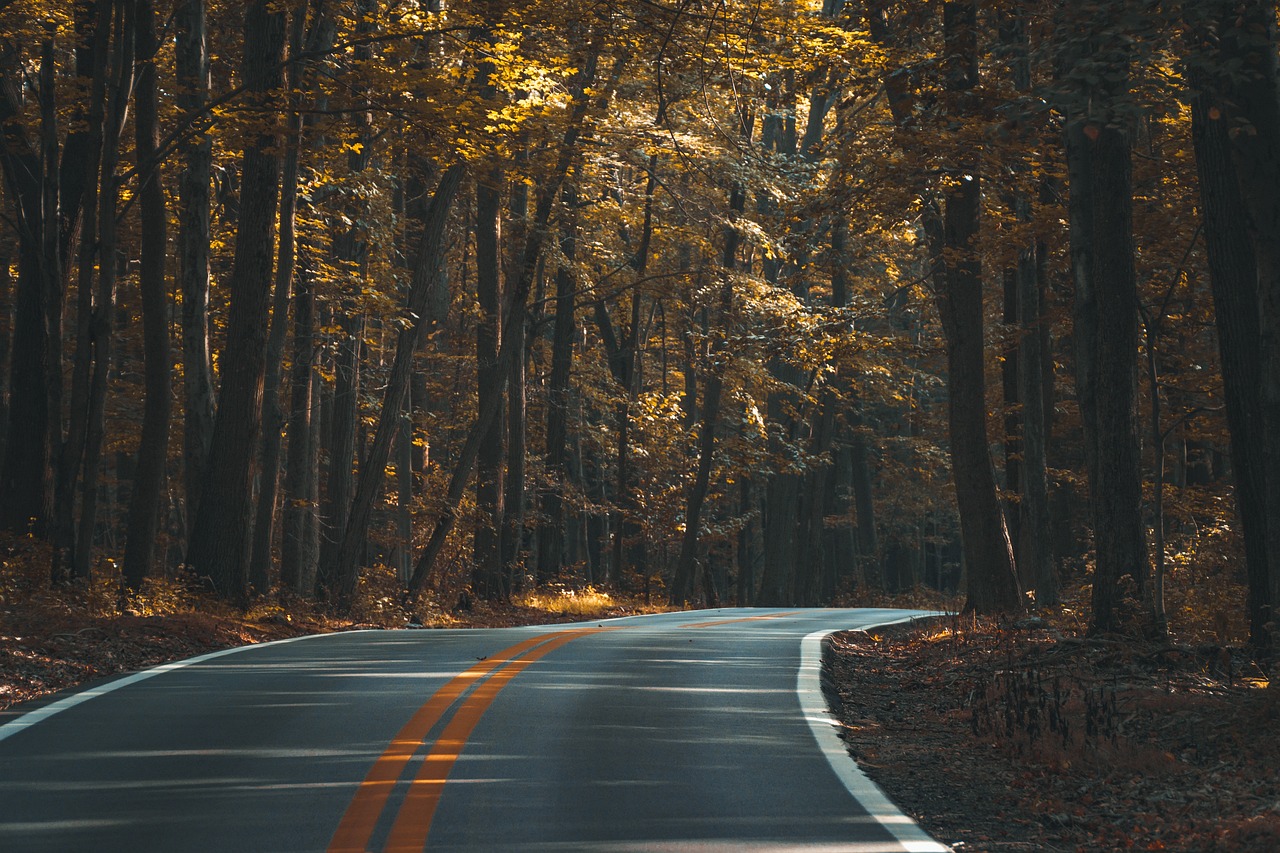
Conclusion: Staying Safe While Traveling
In conclusion, staying safe while traveling is not just about luck; it’s about being prepared and aware. The world is a vast and beautiful place filled with incredible experiences, but it can also present unexpected challenges. By equipping yourself with essential self-defense techniques and adopting a proactive mindset, you can significantly enhance your safety. Remember, it's all about awareness and preparedness. Whether it’s recognizing potential threats or knowing how to respond when something doesn’t feel right, these skills can make a world of difference.
Moreover, practicing basic self-defense moves can empower you to act decisively in emergencies. Even the simplest techniques can provide a sense of security and confidence as you navigate unfamiliar environments. Think of it as having a safety net; it’s always there, even if you hope you never need to use it.
Traveling in groups can also amplify your safety. There’s strength in numbers, and staying connected with your travel companions can help you remain vigilant and aware of your surroundings. Implementing strategies like the buddy system can ensure that no one gets left behind or feels unsafe. So, as you plan your next adventure, consider how you can incorporate these safety strategies into your travel routine.
Lastly, don't underestimate the power of local knowledge. Before you set off, take the time to familiarize yourself with emergency contacts and resources available at your destination. It’s like having a map to safety; knowing who to call in case of an emergency can alleviate a lot of stress and help you feel more secure. Always keep a list of local emergency numbers and support services handy, and make sure to share this information with your travel buddies.
Ultimately, the key to enjoying your travels lies in your ability to stay safe. Embrace the adventure, but never lose sight of your personal safety. With the right knowledge and a little preparation, you can explore the world confidently and securely. So pack your bags, keep your wits about you, and get ready to make unforgettable memories!
- What are the best self-defense techniques for travelers? Basic techniques such as striking, escaping holds, and using everyday items as improvised weapons are highly effective.
- How can I improve my situational awareness while traveling? Stay alert, observe your surroundings, and trust your instincts. Regularly scan the area for potential threats.
- Is it safe to travel alone? While solo travel can be safe, it’s essential to take precautions, such as staying in well-populated areas and keeping emergency contacts close.
- What should I do if I feel threatened? Trust your instincts, remove yourself from the situation if possible, and seek help from authorities or locals.
- How can I prepare for emergencies while traveling? Create a list of local emergency numbers, familiarize yourself with the area, and have a plan for different scenarios.
Frequently Asked Questions
- What are some basic self-defense techniques I can learn before traveling?
Some basic self-defense techniques include simple striking moves, escaping holds, and using your body weight to your advantage. These can empower you to protect yourself in emergencies. It's essential to practice these techniques regularly to build muscle memory and confidence.
- How can I improve my situational awareness while traveling?
Improving situational awareness involves staying alert to your surroundings, observing the behavior of people nearby, and recognizing environmental cues. Trusting your instincts is also crucial; if something feels off, it's okay to remove yourself from the situation.
- What everyday items can I use for self-defense?
Everyday items like keys, pens, or a flashlight can serve as effective self-defense tools. You can use them to strike or distract an attacker. The key is to be creative and aware of your surroundings to identify potential improvised weapons.
- Is traveling in a group safer than traveling alone?
Yes, traveling in a group can enhance safety significantly. It fosters a sense of security and allows for shared vigilance. Implementing strategies like the buddy system can ensure everyone looks out for each other, making it harder for potential threats to target individuals.
- How do I prepare for emergencies while traveling?
Preparing for emergencies involves creating a list of important contacts, knowing local emergency numbers, and familiarizing yourself with local support services. Before your trip, research the area and save this information on your phone or in a travel document for quick access.
- What should I do if I feel threatened while traveling?
If you feel threatened, try to remove yourself from the situation as quickly as possible. Use your voice to assertively communicate if someone is making you uncomfortable. If necessary, don’t hesitate to seek help from local authorities or nearby individuals.
- How can I practice self-defense techniques effectively?
Practicing self-defense techniques can be done through classes, online tutorials, or with a partner. Regular practice helps build confidence and ensures that you can react instinctively in a real-life situation. Consider joining a local self-defense class for hands-on experience.



















